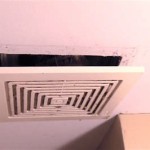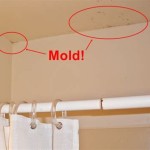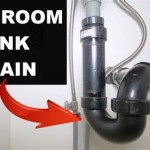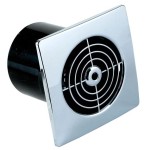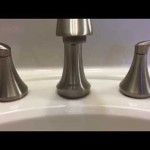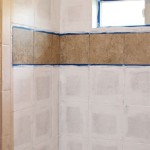Moen Brushed Nickel Bathroom Sink Stopper Replacement: A Comprehensive Guide
The bathroom sink stopper, though a small component, plays a crucial role in the functionality of a bathroom sink. It allows for the retention of water for various tasks, such as washing hands or shaving. Over time, stoppers can become worn, stained, or mechanically faulty, necessitating replacement. When dealing with Moen fixtures, specifically those with a brushed nickel finish, maintaining aesthetic consistency is paramount. This article provides a comprehensive guide to replacing a Moen bathroom sink stopper with a brushed nickel alternative, covering identification, selection, installation, and maintenance.
Identifying the Correct Moen Brushed Nickel Stopper
Before initiating the replacement process, accurately identifying the existing stopper and faucet model is essential. Moen offers a variety of stopper designs, each engineered for specific faucet types. Selecting the wrong stopper can lead to improper fit, compromised functionality, and potential damage to the drain assembly.
The first step involves locating the model number of the Moen faucet. This information is typically found on the original packaging, the installation manual, or sometimes etched onto the faucet itself. Common locations for the model number include underneath the sink, on the faucet shank, or within the faucet handle assembly. Referencing the model number on Moen's website or contacting their customer support will provide detailed specifications, including the compatible stopper type and finish.
Visual comparison is another useful method. Examine the existing stopper's design, size, and the mechanism that operates it. Common stopper types include pop-up stoppers, lift-rod stoppers, and push-button stoppers. Note the presence (or absence) of a lift rod hole, the diameter of the stopper head, and the type of linkage connecting the stopper to the drain assembly. Compare these features to available brushed nickel stopper options online or at local hardware stores. Pay close attention to the compatibility notes provided by the manufacturer or retailer.
When searching for a replacement, ensure the finish matches the existing faucet. Moen's brushed nickel finish has a distinct appearance compared to other nickel finishes like polished nickel or satin nickel. Subtle differences in tone and texture can be visually jarring if the stopper doesn't match the faucet. Purchasing directly from Moen or an authorized Moen dealer ensures finish consistency.
Considering the material composition of the stopper is also crucial. Brass components offer durability and resistance to corrosion, while plastic parts may be more susceptible to wear and tear. A stopper with a brass base and a brushed nickel-plated head offers a balance of aesthetics and longevity. Read product descriptions carefully to determine the materials used in the stopper's construction.
Step-by-Step Installation of a Moen Brushed Nickel Stopper
Replacing a bathroom sink stopper is a straightforward task that can typically be accomplished with basic tools and some patience. The following steps outline the installation process for a common pop-up stopper mechanism, which is widely used in Moen faucets. Always shut off the water supply valves under the sink before commencing any plumbing work.
The initial step involves removing the existing stopper. For a pop-up stopper, locate the pivot rod underneath the sink. This rod connects the lift rod (located on the faucet) to the stopper. Loosen the nut that secures the pivot rod to the drain assembly. Once loosened, pull the pivot rod out of the drain assembly. This will release the stopper from its linkage. From the top of the sink, gently pull the old stopper out of the drain opening.
Thoroughly clean the drain opening. Remove any debris, hair, soap scum, or mineral deposits that may have accumulated around the drain flange and inside the drainpipe. A small brush or a specialized drain cleaning tool can be helpful for this task. Ensure the drain surface is clean and smooth to prevent leaks and ensure proper sealing of the new stopper.
Assemble the new stopper. Most replacement stoppers come with a rubber or silicone gasket that seals the stopper against the drain opening. Ensure the gasket is properly seated on the stopper before inserting it into the drain. The gasket should fit snugly and create a watertight seal. Applying a small amount of plumber's grease to the gasket can facilitate insertion and improve sealing.
Insert the new stopper into the drain opening. Align the stopper so that the hole (if present) for the pivot rod faces the back of the sink. Gently push the stopper down into the drain until it is fully seated. Avoid forcing the stopper, as this could damage the gasket or the stopper itself.
Reattach the pivot rod. Locate the hole on the stopper that corresponds to the pivot rod. Insert the pivot rod through the drain assembly and into the hole on the stopper. Ensure the pivot rod is fully inserted and properly aligned. Tighten the nut that secures the pivot rod to the drain assembly. Avoid overtightening the nut, as this could damage the pivot rod or the drain assembly.
Adjust the lift rod. With the pivot rod reattached, test the functionality of the stopper by operating the lift rod on the faucet. The stopper should move smoothly up and down, creating a tight seal when closed and allowing water to drain freely when open. If the stopper does not operate correctly, adjust the position of the pivot rod or the lift rod until the desired functionality is achieved. Minor adjustments to the pivot rod angle can often resolve sticking or leaking issues.
Test for leaks. After completing the installation and adjustments, turn on the water supply valves under the sink. Fill the sink with water and observe the drain for any leaks. Check the connection between the pivot rod and the drain assembly, as well as the seal between the stopper and the drain opening. If leaks are detected, tighten the connections or reposition the stopper until the leaks are eliminated.
Maintaining a Brushed Nickel Bathroom Sink Stopper
Proper maintenance is essential to preserving the appearance and functionality of a brushed nickel bathroom sink stopper. Regular cleaning and preventative measures can extend the lifespan of the stopper and prevent common issues like staining, corrosion, and mechanical failure.
Regular cleaning is paramount. The brushed nickel finish is susceptible to water spots, soap scum, and mineral deposits. These deposits can dull the finish and make the stopper appear unsightly. Clean the stopper regularly with a mild soap and water solution. Avoid using abrasive cleaners, scouring pads, or harsh chemicals, as these can scratch or damage the finish. A soft cloth or sponge is ideal for cleaning the stopper.
Drying the stopper after each use can minimize water spots. Water spots are caused by minerals in the water that are left behind when the water evaporates. Drying the stopper with a clean, dry cloth after each use will prevent these minerals from accumulating and forming unsightly spots. This simple practice can significantly extend the life of the finish.
Periodic lubrication of the stopper mechanism is recommended. The moving parts of the stopper, such as the pivot rod and the stopper itself, can become stiff or corroded over time. Applying a small amount of plumber's grease or silicone lubricant to these parts can keep them moving smoothly and prevent corrosion. Be careful not to use too much lubricant, as this can attract dirt and debris.
Addressing clogs promptly is crucial. Hair, soap scum, and other debris can accumulate in the drain and clog the stopper mechanism. This can prevent the stopper from sealing properly and lead to slow drainage. Regularly cleaning the drain with a drain snake or a specialized drain cleaning tool can prevent clogs from forming. Avoid using harsh chemical drain cleaners, as these can damage the finish on the stopper and the drain assembly.
Inspecting the stopper periodically for signs of wear and tear is essential. Check the gasket for cracks or damage. Inspect the pivot rod for corrosion or bending. If any damage is detected, replace the affected parts immediately to prevent further problems. Replacing a worn gasket is much easier and less expensive than replacing the entire stopper. A proactive approach to maintenance will ensure the long-term functionality and aesthetic appeal of the Moen brushed nickel bathroom sink stopper.
When dealing with hard water, consider using a water softener. Hard water contains high levels of minerals, such as calcium and magnesium, that can cause mineral deposits to form on the stopper and other bathroom fixtures. A water softener can remove these minerals from the water, preventing the formation of deposits and extending the life of the finish.
Furthermore, avoid using the sink as a disposal for harsh chemicals. Many household cleaners, solvents, and acids can damage the brushed nickel finish. Dispose of these chemicals properly and avoid pouring them down the sink drain. This preventative measure will help protect the stopper from corrosion and discoloration.

Moen Brushed Nickel Universal Sink Pop Up Drain In The Drains Stoppers Department At Com

Moen Tub Shower Drain Covers In Brushed Nickel T90331bn The Home Depot

Moen Doux Single Hole Handle Bathroom Faucet In Brushed Nickel S6910bn The Home Depot

Moen Lindor Brushed Nickel Single Handle Bathroom Faucet 4 In Com

Moen Lindor Spotshield Brushed Nickel Two Handle Bathroom Faucet 4 In Com

Moen Lindor Brushed Nickel Single Handle Bathroom Faucet 4 In Com

Moen Banbury 8 In Widespread Double Handle High Arc Bathroom Faucet Spot Resist Brushed Nickel Valve Included 84947srn The Home Depot

Moen Voss Brushed Nickel 4 In Centerset 2 Handle Watersense Bathroom Sink Faucet With Drain The Faucets Department At Com

Moen Findlay Single Handle Hole Bathroom Faucet In Spot Resist Brushed Nickel 84516srn The Home Depot

Moen Lindor Spot Resist Brushed Nickel Widespread 2 Handle Watersense Bathroom Sink Faucet With Drain In The Faucets Department At Com
Related Posts
